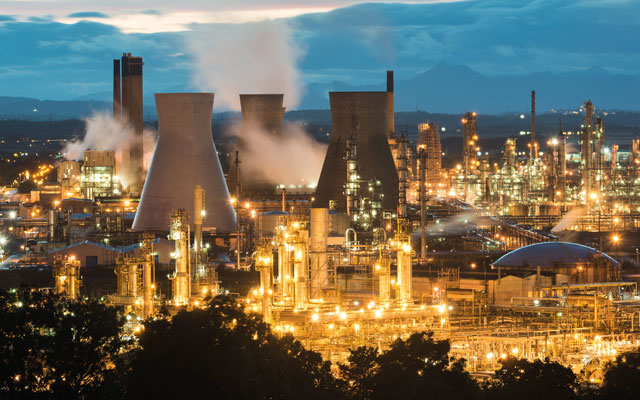Serviceability Driven Asset Management offers a new approach to reliability management, focusing on connected asset systems and root causes of failure. IBM associate partner Debajyoti Chakraborty explains.

A process malfunction in a super high-pressure polymer plant in Eastern Europe caused a fire, explosion and serious health and safety risks. Pre-polymerisation in a pipeline left a South Asian petrochemicals plant closed for several weeks. The storage tanks of a Middle East chemical plant overflowed, contaminating the local environment after a wrong reaction caused unexpected expansion.
These are just a few examples of how process issues can have a devastating and long-term impact on an organisation. The costs of these incidents in lost production, expensive repairs, and health and safety issues, not to mention the impact on a company’s reputation, are massive. Preventing such situations is highly desirable but not so easy to achieve. Current approaches to process plant predictive analytics and asset management aren’t up to the task: a different way of thinking is needed.
Approaches to maintenance
Reliability centred maintenance or RCM has taken many shapes in the past, but transformation in the last decade has been at an unprecedented speed due to the growing need for productivity and operational excellence. Further acceleration has happened during the last four to five years, much of it attributed to the explosion of new technologies that can integrate previously isolated applications that stored data in functional silos.
Then big data and analytics opened up the mammoth opportunity to understand and analyse those data and extract many insights that were historically hidden due to the technology limitations. One of the biggest benefactors of this new technology boom is asset reliability management or, to use another popular term, asset performance management. Different asset-centric industry sectors have different levels of importance of reliability management. Take the example of the hydrocarbon processing industry or HPI, which is downstream of the chemicals and petroleum sector.
Reliability management is extremely important for the HPI sector, not only for asset uptime or productivity but also for meeting increasingly stringent health, safety and environmental requirements. The ability to predict asset deterioration with reasonable accuracy and plan maintenance activities based on such predictions are the ultimate goals of reliability engineers. With predictive asset management driven by artificial intelligence, now they have that in hand.
Digitalisation of asset management systems started with Enterprise Asset Management systems that allowed the integration of asset-related data stored in multiple systems. In recent years, as Industry 4.0 advances with amazing velocity, there are more data and more opportunities for reliability engineers to improve uptime and operational efficiency. This dataset is an extremely rich source of information about the past and present performance of assets and is vital to predicting future behaviour.

Return on investment
Organisations, EAM vendors and data science communities have made significant investments in predictive asset management over the years. However, very few have come close to generating the expected returns on investment.
The reason is that most predictive asset management solutions have been built to predict when the asset will fail – whereas an efficient reliability management solution needs to know what the root causes of the failure are, and how to predict these causes and take mitigating action.
A new approach for reliability management, called Serviceability Driven Asset Management or S-DAM, comes from IBM. This also depends on predictive analytics, but its approach is far from the traditional ones.
S-DAM is based on domain knowledge of the chemical processes of the target plant, clear understanding of how the interconnected asset system supports those processes, and what could be the impact if one or more assets starts deviating from designed service levels.
S-DAM starts by building a “dictionary” of designed service levels of connected asset systems, draws failure modes and mechanisms of critical assets and drills down to possible root causes. S-DAM predicts the root causes that will occur before an asset starts showing indications of failure.
For example, often traditional predictive asset management solutions are built for heat exchangers, to predict temperature differential across the component. However, this approach does not help improve asset management measures such as MTTR or MTBF because by the time a declining temperature differential is detected, the asset has already started to fail, and an intervention to stop the heat exchanger and clean fouled tubes is essential.
In the S-DAM approach, service levels of connected asset systems are scrutinised for potential failure modes and mechanisms. Very often it is found that the root causes are linked to water quality deviation caused by poorly performing chemical injection pumps in the cooling water treatment plant.
With this knowledge, maintenance can be surgically targeted to the actual root causes. As a result, the MTBF of the heat exchanger increases and maintenance expenditure is reduced significantly, while improving performance of the overall plant.
Saving maintenance costs is just one part of the S-DAM’s overall advantage. One of the biggest benefits of the S-DAM approach is to improve Overall Plant Effectiveness or OPE. Calculated as throughput × availability × quality, this is a much-needed mind shift from the often wrongly used key measure of Overall Equipment Effectiveness or OEE for this sector.
Process industry assets are connected and typically designed with high redundancy or duplication. Most assets are complemented by standby assets. So managing performance of individual assets in isolation brings very little benefit. Overall Plant Effectiveness helps overcome that weakness, measuring effectiveness of individual connected asset systems in a section of a plant and then for the entire plant.
In summary, S-DAM
- measures and tracks performance levels across an asset system and can predict risks to Overall Plant Effectiveness
- Consistently measures service levels rendered by each asset, calculates differences from designed tolerance limits, tracks online analysis and laboratory reports and estimates risks when connected assets start showing similar anomalous behaviour simultaneously
- Spots potential risks of asset system failure affecting the quality of the finished products, throughput and availability of the section of a plant, or potential breaches of safety and environmental compliance and informs responsible teams accordingly
- Works in tandem with other established solutions such as energy optimisation, maintenance plan optimisation, HSE compliance and capex-opex balance optimisation.
The S-DAM approach could help realise a 1% improvement in OPE. This may not sound significant, but consider that a mid-sized refinery with a capacity of 300,000 barrels daily could increase gross yearly margin by approximately $30m (£24m).
As production and asset systems become increasingly complex and interconnected, the need to manage them effectively becomes increasingly complex too.
Industry 4.0 enables organisations to consume and utilise more data but also throws down a challenge – to identify and focus on the right solutions so that this massive investment can bring real business benefits.
Though the desire to predict the unpredictable is still a dream for many reliability engineers, how to predict it needs a new approach for reliability management in the modern era.
deb.chakraborty@uk.ibm.com
www.linkedin.com/in/debchakraborty1/

